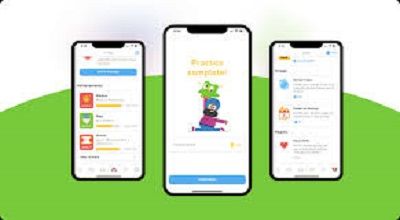Gamification Applications
Gamification applications are the applications of game-design elements and game principles in non-game contexts to encourage participation, engagement, and loyalty. It’s a technique used to make activities more enjoyable and motivating by incorporating game-like features such as points, levels, challenges, and rewards.
Gamification applications aim to leverage the psychological principles behind games to influence behavior and enhance the user experience. By incorporating elements of competition, progress, and achievement, gamification encourages individuals to engage in desired activities and achieve specific goals.
Common examples of gamification include loyalty programs, fitness apps, educational platforms, and corporate training programs. For instance, a fitness app might use gamification by awarding points for completing workouts, unlocking achievements for reaching milestones, and providing virtual rewards for consistent progress.
Gamification can enhance motivation, increase engagement, improve productivity, and foster a sense of accomplishment. It taps into the innate human desire for play, competition, and recognition, making tasks and activities more enjoyable and meaningful.
However, it’s important to note that gamification should be applied thoughtfully and ethically. Overly aggressive or manipulative gamification techniques can have negative consequences, such as addiction or burnout. Therefore, it’s crucial to strike a balance between engaging users and respecting their autonomy.
Benefits of Gamification Application
The benefits of gamification are numerous and can have a positive impact on various aspects of life and work. Here are some key benefits of Gamification Applications :
1. Increased Engagement: Gamification makes tasks and activities more engaging and enjoyable, leading to higher levels of participation and interaction. By incorporating game-like elements, individuals are more likely to be motivated to complete tasks and achieve goals.
2. Enhanced Learning: In educational settings, gamification can improve the learning experience by making it more interactive and immersive. It can help students retain information better, increase their motivation to learn, and provide immediate feedback on their progress.
3. Improved Productivity: In work environments, gamification can boost productivity by setting clear goals, rewarding achievements, and creating a sense of friendly competition among employees. This can lead to increased motivation and a more efficient workflow.
4. Behavior Change: Gamification can be used to influence behavior and promote positive habits. For example, fitness apps use gamification to encourage users to exercise regularly, while sustainability initiatives use gamified challenges to promote eco-friendly behaviors.
Read more here…
5. Enhanced User Experience: By incorporating elements of gamification into products and services, businesses can create a more engaging and enjoyable user experience. This can lead to increased customer satisfaction, loyalty, and retention.
6. Skill Development: Gamification can be used to develop and enhance specific skills, such as problem-solving, critical thinking, and decision-making. It provides a structured and interactive way for individuals to practice and improve their abilities.
7. Motivation and Recognition: Gamification provides a platform for recognizing and rewarding individuals for their achievements. This can boost motivation, foster a sense of accomplishment, and create a positive feedback loop that encourages continued participation.
8. Data Collection and Analysis: Gamification platforms can collect valuable data on user behavior, preferences, and performance. This data can be used to gain insights into user engagement, preferences, and areas for improvement.
Last Words
Overall, gamification applications have the potential to transform the way people learn, work, and engage with products and services by making experiences more enjoyable, motivating, and rewarding.
